
Looking for the best historical sites in Adelaide to explore?
This guide takes you through 16 of the city’s most fascinating spots, from grand colonial buildings to hidden underground tunnels.
I’ve been living in South Australia since 2020 and spend a lot of time wandering around Adelaide, especially the older parts that still carry stories from the past.
If you’re curious about the city’s history but don’t know where to start, this list makes it easy to find beautiful, meaningful places right in the heart of town.
Must-Visit Historical Landmarks in Adelaide
1. Ayers House
Ayers House is one of those places that stops you in your tracks.
Sitting right on North Terrace, it’s the last mansion left from Adelaide’s grand Victorian era, and you can feel the history in the walls the second you walk in.
Built in 1846 as a humble cottage, it became much more extravagant once Sir Henry Ayers took over.
He didn’t just live here – he made it the heart of political and social life in colonial South Australia.
What stands out straight away are the details. The ceilings are hand-painted, fine stencilled woodwork everywhere, and clever little design tricks like trompe l’oeil features play with your eyes.
The whole house is built from local bluestone, and the cool basement was a smart escape from Adelaide’s heat before air con was a thing.
Gas lighting was cutting-edge then, and Ayers House was one of the first to have it installed.
After a major water leak in 2005, the restoration carefully restored all that 19th-century elegance, right down to the original paintwork.
Between 1855 and 1897, it wasn’t just Sir Henry’s home. Its grand rooms hosted cabinet meetings, parliamentary dinners, and high-society balls.
Stepping through today, the atmosphere hasn’t gone anywhere. The guided tours feature period furniture, stories of Adelaide’s political elite, and fascinating exhibitions that change occasionally.
The house now does more than tell stories. It’s a venue too, hosting weddings, private functions, and corporate events with that same old-world charm.
Being so close to the Art Gallery, Museum, and Botanic Gardens makes adding to any day in the city easy.
2. Adelaide Gaol
Adelaide Gaol isn’t your typical tourist stop – it’s raw, chilling, and gripping.
Hidden off Port Road in Thebarton, this old sandstone fortress first opened in 1841 and operated for nearly 150 years.
It’s one of the city’s oldest buildings, and walking through those big iron-studded gates feels like stepping into another world.
You’re not just looking at prison walls – you’re walking the same yards where some of the state’s most notorious criminals once stood.
The stories here aren’t sugar-coated. Forty-five executions happened inside these walls, and the remnants of that past linger in the atmosphere.
The cells are cold and narrow, the yards feel isolated, and a strange stillness hangs in the air.
It’s all open for exploring, thanks to self-guided tours that let you move at your own pace.
Each cellblock has its own story – bushrangers, riots, escape attempts – and those night tours bring the ghost tales out in full force.
Some say they’ve seen things, felt things. Whether you believe it or not, it adds another layer to the experience.
What I like is that the gaol hasn’t been polished up too much. A rawness makes it feel real – no staged drama, just preserved history that speaks for itself.
It’s eerie, sure, but also deeply fascinating if you’re into the darker side of Adelaide’s colonial past.
Adelaide Gaol is open daily from 10 am to 4 pm, with last entry at 3 pm.
If you’re curious about the city’s haunted past and love a good scare, the Adelaide Gaol Ghost Tour and Paranormal Investigation is one of the most unforgettable and spine-tingling historical experiences Adelaide has to offer—book your spot now if you dare.
3. Adelaide Botanic Garden
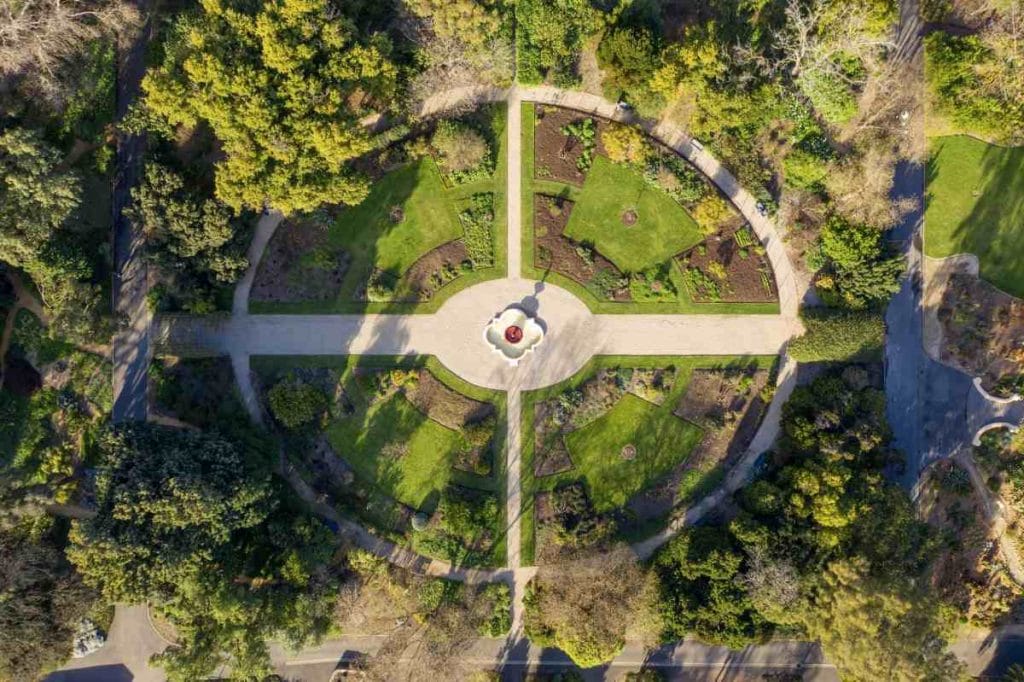
Walking into the Adelaide Botanic Garden is like breathing a sigh of relief. Tucked into the city’s northeast corner, it’s quiet, green, and full of surprises.
Open since 1857, this place effortlessly blends nature and history.
The Palm House is hard to miss. Built in 1877 and shipped in from Germany, this glass conservatory is one of a kind, with steamy air and lush tropical plants inside.
Nearby is the Museum of Economic Botany, opened in 1881, where you can see how plants have shaped everything from medicine to clothing. It’s like stepping into a time capsule of botanical discovery.
What I love most is how it never feels crowded. There’s always a shady spot by the lotus pond or a patch of grass under the trees where you can sit with a coffee or picnic and take it all in.
Native plants grow alongside exotic ones, and every corner feels like it tells a story that’s taken decades, sometimes centuries, to grow.
The gardens are free to enter and open every day of the year. From October to March, they’re open Monday through Friday from 7:15 a.m. to 6:30 p.m. and weekends from 9 a.m. to 6:30 p.m.
In the cooler months, April through September, they close a bit earlier—5:30 p.m. each day.
4. South Australian Museum
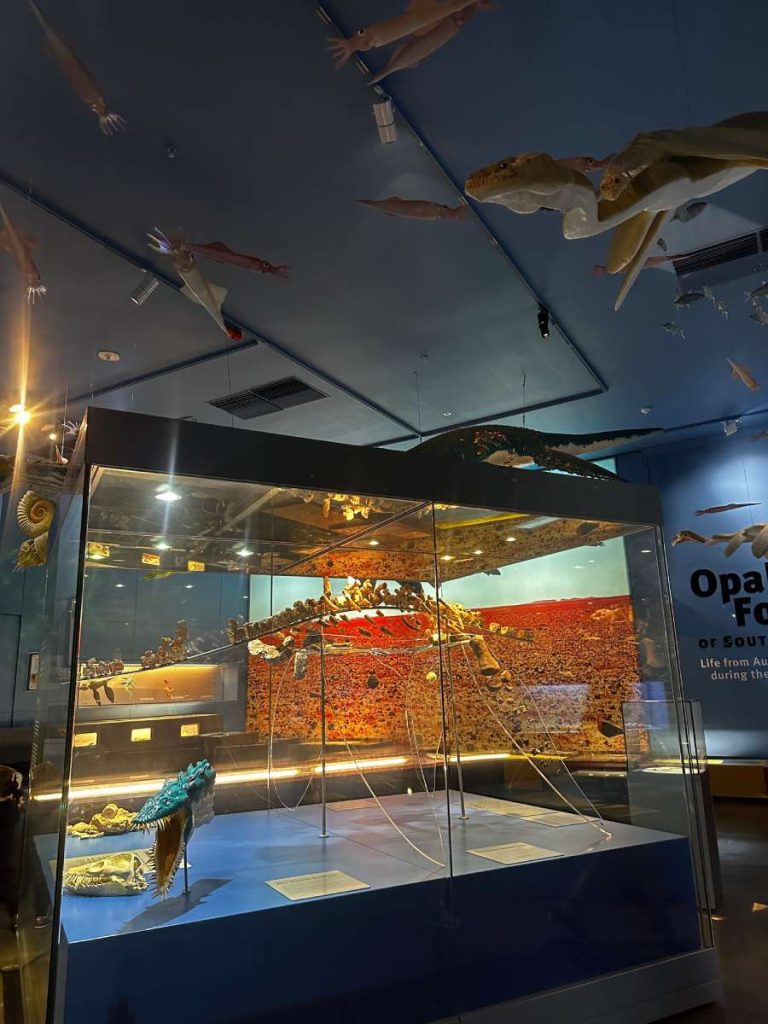
The South Australian Museum is one of those places I keep going back to. Right on North Terrace, it’s been part of Adelaide’s story since 1856 and still feels fresh every time.
It’s free to enter, which makes it easy to choose whether you’ve got a whole afternoon or just want to duck in and escape the heat for a while.
Inside, it’s packed with things that spark curiosity – opalised dinosaur bones, glittering minerals, a full-size whale skeleton, and that giant squid you catch glimpses of on different floors.
The way it’s laid out makes it easy to explore at your own pace, and there’s something to see around every corner.
I like how well the exhibits are presented—everything feels accessible, even to non-science buffs.
The Aboriginal Cultures Gallery is the one that always stays with me. It’s the largest collection of Aboriginal artefacts in the world, and there’s a real sense of care in how it’s displayed.
You’ll see woven works, tools, boomerangs, carvings, and stories that go deeper – stories that speak about land, culture, and connection. It’s beautifully done and humbling to walk through.
There’s also a great section on animals, with worldwide taxidermy displays of mammals and birds.
It’s the kind of place where both kids and adults can find something they connect with.
You’ll even find rooms focused just on South Australia’s native species, and if you’re into gemstones, that gallery is like a hidden treasure.
I’ve spent lazy afternoons here with family; each visit feels different. It’s clean, well-maintained, and always has something new to learn.
Open every day from 10 am to 5 pm, it’s one of those easy Adelaide spots that always delivers.
5. Migration Museum
The Migration Museum is one of those places that makes you pause and think.
It’s tucked just behind the State Library, inside a cluster of sandstone buildings that once served as Adelaide’s Destitute Asylum, already giving it a heavy sense of place.
This isn’t a polished museum filled with shiny displays. It’s intimate, grounded, and full of real stories from people who left their homes to start again in South Australia.
Inside, it blends photos, personal items, documents, and beautifully simple displays.
One room traces the journeys of families arriving during wartime, while another highlights the cultural heritage that still shapes neighbourhoods across Adelaide today.
Some exhibits include artwork and objects from different home countries – things that show where people came from and what they brought with them. It feels small at first, but there’s so much packed into the space.
I loved how interactive it was, too—especially the Haza exhibit, which pulls you in to reflect in a hands-on way.
Kids get their own activities, and they’re not just something to keep them busy—they actually help them understand migration on a deeper level.
During school holidays, they run thoughtful programs that give families plenty to talk about, and there’s space for everyone to move at their own pace.
What hit me the most was how respectful the museum is. It doesn’t shy away from tough history, especially the impact of colonisation on Aboriginal people.
Out in the courtyard, there’s a Reconciliation Stone that acknowledges the museum sits on Kaurna Country.
That gesture, paired with the personal tone of the exhibits inside, makes the whole place feel meaningful and honest.
The Migration Museum is free to enter and open daily from 10 a.m. to 5 p.m.
It’s quiet, gentle, and powerful all at once—perfect for a short visit but worth lingering.
I always recommend it to anyone wanting to understand Adelaide a bit deeper.
6. Tandanya National Aboriginal Cultural Institute
Tandanya sits in the heart of Adelaide’s East End, inside a striking heritage building on Grenfell Street.
The name comes from the Kaurna word for “place of the red kangaroo,” and that’s exactly what it feels like – a place grounded in Country, history, and living culture.
Since opening in 1989, Australia’s oldest Aboriginal-owned and operated multi-arts centre has been dedicated to showcasing Aboriginal and Torres Strait Islander art in all its forms.
The space has always had a creative pulse—not just through art on the walls but also through live didgeridoo performances, workshops, and community events that spill into the gallery.
It’s a place that celebrates the diversity of Indigenous cultures while also staying deeply connected to its location.
The building itself sits on Kaurna land, on a site tied to the Red Kangaroo Dreaming – a story that continues to hold significance in the Adelaide Plains.
But right now, that creative hum is on pause. Tandanya has been temporarily closed since April 2023.
The closure is linked to a mix of things: workforce challenges and the need for upgrades to an ageing building.
It’s a tough loss for the city’s cultural landscape, especially during festival seasons when Tandanya usually buzzes with artist talks and pop-up shows. I’m hopeful it will find its way back soon.
7. Victoria Square / Tarntanyangga
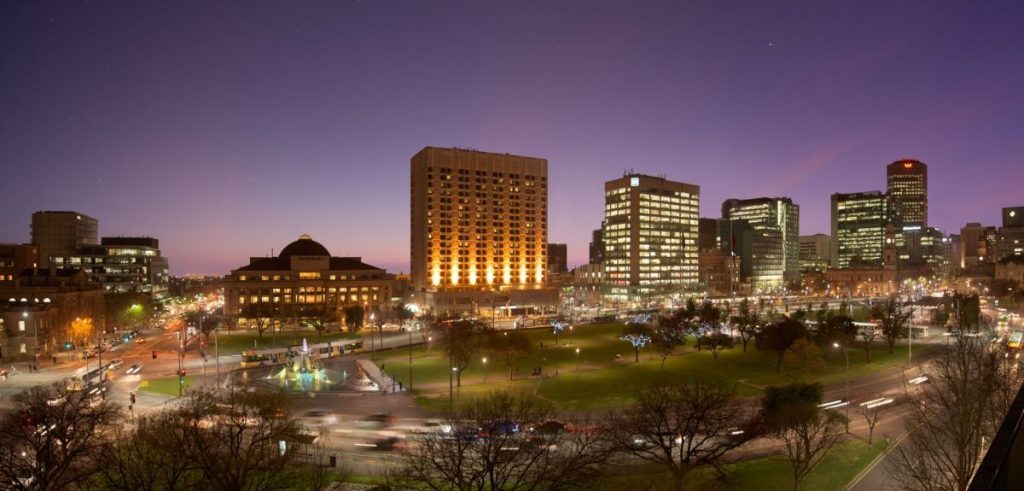
Victoria Square, or Tarntanyangga as it’s known in Kaurna language, sits right in the middle of Adelaide’s city grid.
It’s more than just a public space – it’s layered with meaning. Long before roads and trams carved through the city, this was an important meeting and ceremonial ground for the Kaurna people.
The name Tarntanyangga means “place of the red kangaroo rock.” You can feel the weight of that history the moment you step onto the grass.
Since 2002, the square has carried both names – a small but powerful gesture toward recognising the stories that came long before colonisation.
The Aboriginal flag flies permanently here next to the Australian one, and it’s not just for show – it sets the tone.
This is where cultures come together, and old and new cultures sit. Walk across the lawns and you’ll pass the Queen Victoria statue from 1894, the old tram depot turned event space, and the grand steps of the Supreme Court.
It’s classic Adelaide – colonial architecture, palm trees, and a bubbling fountain all in one spot.
But it’s not stuck in the past. Tarntanyangga is alive with markets, food trucks, cultural events, and occasional protests or rallies.
I’ve sat here during a Fringe show, laced up my skates when the pop-up ice rink took over the square, and tasted my way through Tasting Australia events.
It’s a space that adapts to whatever’s happening in the city, and somehow still holds on to everything it’s been.
8. Adelaide Central Market
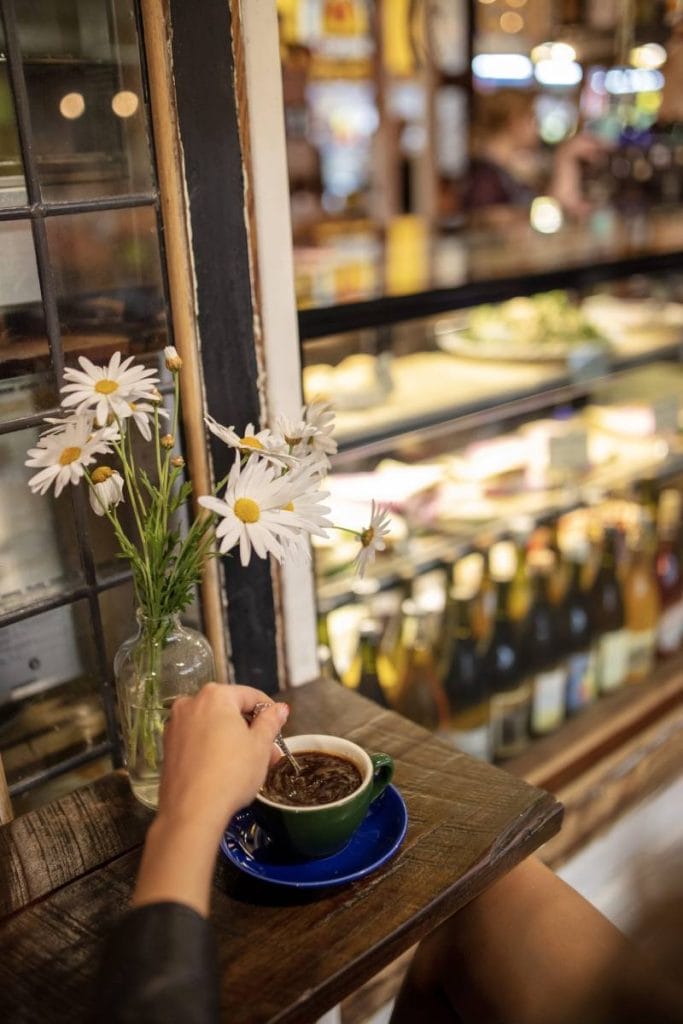
Adelaide Central Market is one of those places that feels alive the moment you walk in.
It’s been feeding Adelaide since 1869 and still holds onto that strong sense of community and rhythm.
What started as a few produce carts on a dusty lot is now one of the southern hemisphere’s biggest undercover markets, tucked behind the old brick façade on Grote Street.
Inside, it’s a total sensory experience – the smell of fresh sourdough, the colours of stacked fruit, the sound of friendly banter between stallholders and regulars.
We came here as a family to track down a pack of Dubai chocolate from the Turkish Delight stall – something we’ve been craving for ages.
But, as always, it turned into more than just a quick stop. We also ended up loading up on fresh fruit because it was way cheaper than the supermarket.
That’s what happens here. You come for one thing and leave with bags full of the good stuff.
What I love is how the market balances old-school charm with a vibrant multicultural buzz.
There’s everything from artisan cheese and handmade pasta to steaming laksa and crunchy baguettes.
You can grab a coffee and wander the aisles, sit down for lunch in the food court, or just people-watch while soaking up the energy.
It’s one of those rare spots where tourists and locals genuinely mix—shopping, chatting, tasting.
Saturday mornings are my favourite time to visit, but you’ve got to go early.
We arrived around 10 a.m. last time, and the place was already buzzing.
Stalls were packed, people were weaving between aisles with trolleys and prams, and this great weekend buzz was in the air.
Parking is easy most days with a multi-level car park right above the market, but Saturdays get hectic – best to arrive early if you want a spot without doing laps. Once you’re in, it’s worth every bit of the effort.
Adelaide Central Market is open Tuesday from 7:00 a.m. to 5:30 p.m., Wednesday and Thursday from 9:00 a.m. to 5:30 p.m., Friday from 7:00 a.m. to 9:00 p.m., and Saturday from 7:00 a.m. to 3:00 p.m. It’s closed Sundays and Mondays.
9. Adelaide Town Hall
Adelaide Town Hall is one of those buildings that quietly commands attention.
Right on King William Street, it’s been part of the city’s story since 1866, with the Albert Tower clock watching over the traffic and trams below.
Built from local stone, its sandstone exterior still holds all the grandeur of the 19th century.
It’s seen more than its share of history—from political milestones to royal visits and pop culture moments that still get talked about today.
One of the biggest events ever to hit the Town Hall happened in 1964. The Beatles stepped onto the balcony and waved to a sea of more than 30,000 fans screaming below.
That moment of Beatlemania is still etched into Adelaide’s memory – a perfect mix of historic venue and rock ‘n’ roll chaos.
But even before and after that, the hall has been central to big civic moments.
It was here that locals gathered for the announcement of Federation in 1901, and where South Australia’s first Governor took office as the state came into its own.
Inside, it’s got that classic, old-world charm. The main auditorium seats around 600 and is lit by elegant chandeliers, with stained-glass windows and an impressive pipe organ anchoring the space.
It’s not flashy, but there’s a quiet elegance – especially during concerts.
I’ve seen performances here where the acoustics shine, and even from the second tier, the view of the stage holds up well, though there are a few columns dotted through the space.
Some say the interior is a bit plain compared to the outside, but it depends on when you catch it.
The Candlelight Concert series brings the hall to life in a whole different way—warm light, live music, and a sense of history all wrapped up in one.
Free tours are available if you want a deeper look into its past, or you can admire it on your way past.
Either way, the Adelaide Town Hall is a source of quiet pride—a symbol of the city’s civic heart with just the right amount of rock star edge.
10. State Library of South Australia (Mortlock Wing)
Tucked just off North Terrace, surrounded by modern buildings and museum facades, the Mortlock Wing of the State Library feels like stepping into another time.
Opened in 1884, it was once the hub of a young colony’s cultural life, serving as a library, museum, and art gallery.
Today, it’s a beautifully preserved slice of Victorian-era grandeur, and hands down one of the most breathtaking spaces in Adelaide.
Walk through the doors and it hits you – two soaring tiers of cast-iron balconies packed with antique books, a glass-domed roof above, and even the original gas lamps still standing guard.
It’s been called one of the most beautiful libraries in the world, and I can see why. The whole place has that slightly magical feel, like it belongs in a Harry Potter scene.
There’s a quiet hush, the soft smell of old paper, and sunlight catching dust in the air. It doesn’t feel like a museum – it feels like a working time capsule.
Downstairs, you’ll find exhibits showcasing South Australian history – explorer journals, vintage photos, and old maps that make it feel more like a mini museum than just a reading room.
Up on the second floor, you can browse and touch some of the books, which only adds to the experience.
The third floor is home to the National Geographic collection, so those shelves are for display only – but just being up there is part of the charm.
It’s peaceful and rich in detail, regarding how the light moves across the timber floorboards.
It would be nice to have a little brochure or guide to explain some of the features without needing to Google on the spot, especially since every part of the building has a story.
And just a heads-up – the Mortlock Wing closes at the same time as the Art Gallery, so it’s worth checking hours if you’re planning a late visit.
Entry is free, the atmosphere is unmatched, and it’s a perfect spot to pause and connect with Adelaide’s layered past.
11. Treasury Tunnels
Tucked beneath the Adina Treasury Hotel on Flinders Street is one of Adelaide’s most underrated historical experiences—the Old Treasury and Tunnels tour.
What looks like a luxury heritage hotel on the surface hides a maze of stone corridors, locked doors, and forgotten chambers that date back to the mid-1800s.
This was once the beating heart of colonial administration, and walking through the tunnels, you can still feel the weight of decisions made in those thick-walled rooms.
The tour takes you underground into one of the city’s oldest buildings, where stories of riots, reforms, floods, and political scandals come to life.
There’s a real atmosphere – darkened corridors, heavy stone walls, and the echo of footsteps through spaces that once held government secrets, smuggled goods, and maybe even a few ghost stories.
Some rooms were once treasury vaults, others connected key offices through hidden passageways.
It’s a chance to see Adelaide from a different angle – beneath the city and deep into its past.
You’ll hear tales of colourful characters who shaped South Australia – not just politicians, but rebels, reformers, and everyday workers who passed through these halls when the colony was still finding its feet.
While the stories are old, the experience is smooth—the tour is wheelchair—and pram-accessible, making it easy for most visitors to explore.
Tours run on Sundays at 1:00 p.m. and 3:00 p.m. from 19 January to 7 December 2025.
Tickets are $20 for adults, $18 for concession holders, and $12 for students, children aged 8 to 15, and National Trust members.
Companion Card holders go free. Kids under 8 can’t join the tour, but it’s a great way for older children and curious adults to see a different side of Adelaide’s history.
12. Adelaide Arcade
Adelaide Arcade is one of those places that stops you mid-step.
Tucked between Grenfell Street and Rundle Mall, this elegant 1885 shopping arcade feels like a time machine.
Its polished tiles, pressed-metal ceilings, and ornate details hint at its past as one of the most modern arcades in the Southern Hemisphere.
It’s not just the architecture that impresses – it’s the atmosphere.
Something is refreshing about walking through a space that still holds onto its old-world charm while offering something new at every turn.
The Battery Bar has one-hour alteration shops, jewellers, tailors, gift stores, vintage sellers, tattoo artists, and even a barber.
Upstairs hides a mix of creatives and professionals – designers, financial services, a theatre, and a dance studio.
The variety isn’t just surprising – it works because everything here feels curated, not cookie-cutter.
Around Christmas, the whole arcade lights up. Decorations hang from the ceiling, the little shopfronts glow with fairy lights, and the place takes on a festive kind of magic.
It’s that same kind of boutique elegance you get from the Queen Victoria Building in Sydney – just more intimate.
There’s even a small museum inside the arcade that tells the story of its long and layered past.
Every now and then, I’ll spot someone quietly reading one of the plaques, learning about ghost stories or old shopkeepers from a century ago.
Adelaide Arcade is a beautiful reminder that not all shopping has to be loud and rushed.
It’s thoughtful, charming, and full of surprises if you take the time to look around.
Sure, it sits right next to Rundle Mall with its bright, busy chains – but this place holds its own.
13. Beehive Corner
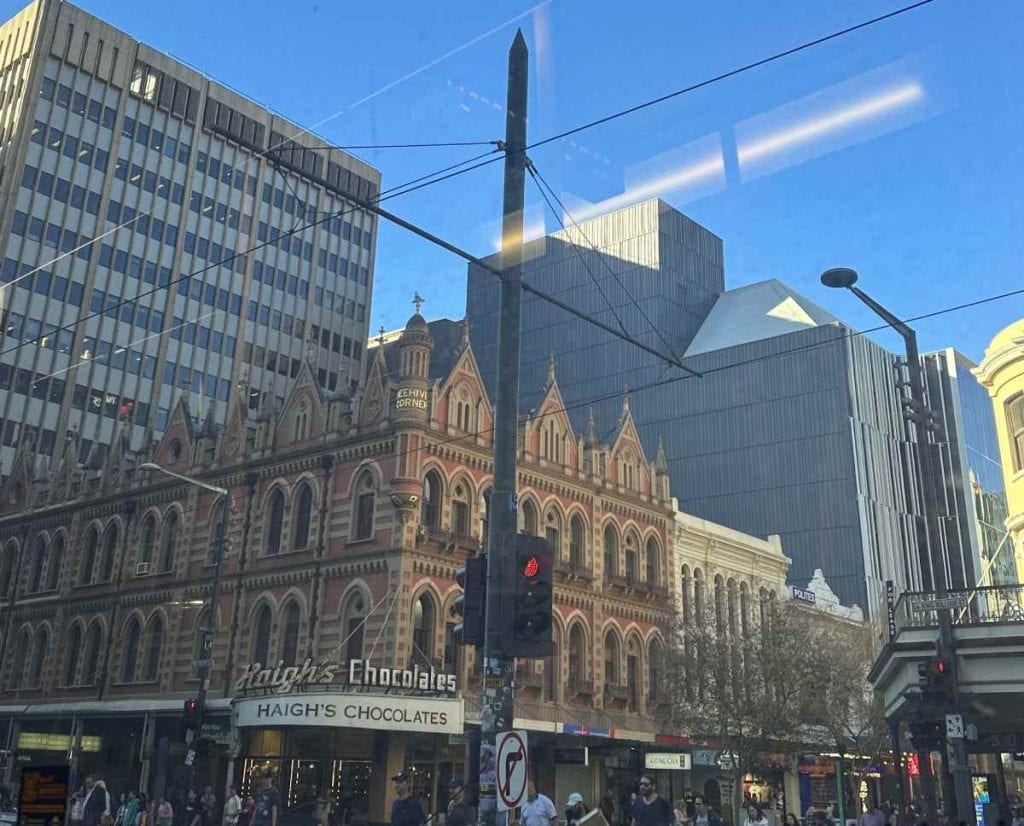
Beehive Corner sits proudly at the junction of Rundle Mall and King William Street, one of those buildings you notice without trying.
Built in 1896, its pointed turret, red brick facade, and gold trim give it that unmistakable Neo-Gothic flair.
It’s been a popular meeting spot for generations, where people say, “let’s meet under the Beehive”, and know exactly what that means.
There’s a timelessness to it. I’ve walked past it more times than I can count, and it still holds that same charm, especially when you look up and catch the details most people rush past.
The black and white photo of it hanging in someone’s hotel room makes total sense – it’s the kind of structure that sticks in your mind and deserves to be captured.
The corner itself is always busy, tucked into the edge of Rundle Mall where all the city’s energy flows.
It’s surrounded by department stores, fashion outlets, and plenty of places to eat if you know where to look.
But Beehive Corner stands apart – not just because of how it looks, but because it feels like it belongs to the city in a way that’s hard to explain.
And yes, walking past Haigh’s Chocolates on the ground floor takes real willpower without going in.
14. Parliament House
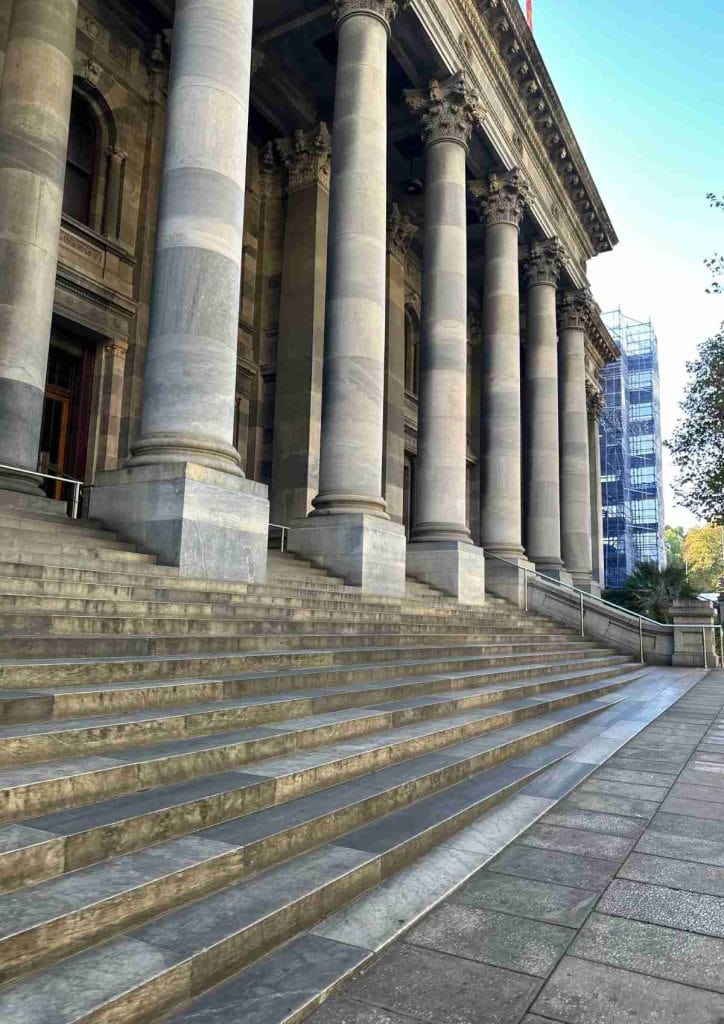
Parliament House stands tall on the corner of King William Street and North Terrace, and there’s no missing it.
Its towering marble columns and formal symmetry make it one of Adelaide’s most recognisable civic buildings.
Built in stages throughout the 19th and early 20th centuries, it’s home to South Australia’s legislature and has been the backdrop for decades of political change, debate, and decision-making.
The building itself is grand but not over-the-top. There’s something balanced about how it rises above the street, framed by well-kept trees that soften its stone facade.
The mix of classical architecture and leafy surrounds makes it feel solid and timeless.
It’s the place you might not plan to stop at, but you always end up pausing in front of it to take it in.
I’ve walked past Parliament House countless times, which still holds a quiet sense of importance.
It’s full of history – not in a flashy way, but in the kind that seeps into the details.
The structure is beautifully maintained, and its presence is felt from almost every angle on the street.
If you get the chance, book a tour inside both chambers of Parliament.
The difference between them is worth seeing—the House of Assembly still retains its rich Victorian detail from the 1880s, while the Legislative Council, rebuilt in the 1930s, has a much more stripped-back, modernist feel.
15. Edmund Wright House
Edmund Wright House on King William Street is one of those buildings that makes you stop and take a proper look.
All columns, carvings, and grand proportions, it’s easily one of the most ornate structures in Adelaide.
Built in 1878 for the Bank of South Australia at a time when wool, wheat, and copper were booming across the state, it was designed to impress—and still does.
The building’s style is all Victorian-era confidence, with classical lines and Renaissance influences that showcase the wealth and ambition of the banks of the time.
Architect Edmund Wright, working with Melbourne’s Lloyd Tayler, didn’t hold back.
Together, they created what’s now considered one of the best surviving examples of 1870s commercial architecture in the city.
You can still see the level of craftsmanship in every detail—it’s bold, elegant, and completely unapologetic.
There’s a bit of drama in its story, too. In the early ’70s, it was marked for demolition to make way for an office tower.
That plan sparked a massive public outcry, and eventually, the Dunstan government stepped in and saved it.
Sculptor John Dowie even called Wright “the Christopher Wren of Adelaide” during the campaign, which says a lot about his impact on the city’s skyline.
For years after, the building housed the Registrar of Births, Deaths and Marriages – so plenty of locals will remember standing in that elaborate banking chamber, paperwork in hand.
If you’re walking by, turn and look across the road to the first shop in from Beehive Corner on Rundle Mall – that’s where Wright first set up his practice after arriving from London in 1849.
You can still feel his presence in this part of town.
16. General Post Office
The old General Post Office, or GPO, is one of those buildings that quietly hold their ground.
Sitting at the corner of King William and Franklin Streets, it’s been a part of Adelaide’s cityscape since 1872.
The standout feature is Victoria Tower, which has been the tallest structure in the city for nearly a hundred years.
Even now, surrounded by glass towers and modern builds, it still manages to pull focus.
The architecture is grand without being showy—detailed stonework, arched windows, and a towering clock that’s been watching over the city centre for generations.
It’s a State Heritage-listed building, and you understand why when you stand in front of it. It’s elegant and solid, like it was built to last and be noticed.
I’ve always considered the GPO one of Adelaide’s quiet icons.
It doesn’t draw crowds like some landmarks do, but people who stop and look always seem to appreciate it.
Someone once called it “a magnificent example of Adelaide’s early architecture,” which perfectly sums it up.